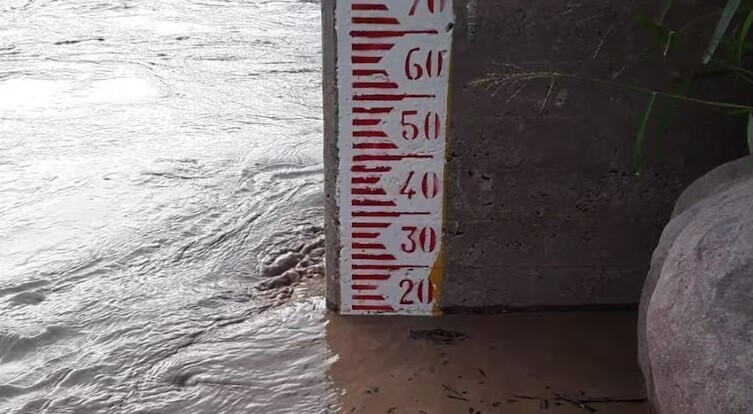
The Pilcomayo River, which flows along the border between Paraguay and Argentina, caused flooding damage to surrounding areas after recording its highest level ever of 6.64m at the Pozo Hondo-Misión La Paz water level observation station on March 17th. However, it has since been steadily declining and returning to a stable state. According to the latest official report from the Trinational Commission of the Pilcomayo River (Comisión Trinacional del Pilcomayo), as of March 27th, the river's water level is 3.82m, a decrease of 2.82m in just ten days.
A few days prior, the Pilcomayo River's rapid rise in water level caused widespread flooding not only in Paraguay but also in areas bordering Brazil and Argentina, resulting in numerous displaced people. In response, the National Commission for the Multipurpose Use and Regulation of the Paraguayan Pilcomayo River Basin (CNRP) implemented emergency work to remove sediment under the General Díaz area bridge to minimize the damage.
Darío Medina, Director of the CNRP, stated, "Currently, water is flowing smoothly not only in the affected area but also under the Brizuela canal bridge." The Paraguayan Ministry of Public Works and Communications (MOPC) explained that this flood is an annual phenomenon caused by heavy rainfall in the Bolivian highlands.
Characteristics of the Pilcomayo River and Causes of Flooding:
Geographical Characteristics: The Pilcomayo River is one of the major rivers in South America, originating in the Andes Mountains and flowing through Bolivia and Argentina before emptying into the Paraguay River. It has a large basin area and is characterized by significant water level fluctuations between the dry and rainy seasons.
Main Causes of Flooding: The floods in the Pilcomayo River are mainly caused by heavy rainfall during the rainy season in the Bolivian Andes region. The rapidly increased water flows downstream, causing flooding in the surrounding low-lying areas. In addition, the gentle slope of the lower reaches, which slows down the water flow and leads to sediment accumulation, also contributes to the flood damage.
Past Flood Cases and Damages:
The Pilcomayo River basin has periodically experienced flood damage in the past. In particular, more severe flood damage has occurred during climate anomalies such as El Niño. Floods have caused damage such as inundation of agricultural land, destruction of houses, and loss of roads, as well as an increase in the risk of disease spread along with the displacement of people.
Future Prospects and Preparedness:
Following this record flood, the countries in the Pilcomayo River basin are increasingly aware of the need for a joint response to prevent flooding and minimize damage. From a long-term perspective, efforts such as establishing a basin management plan, strengthening the flood forecasting system, and building disaster preparedness infrastructure will be necessary. Furthermore, considering the potential for increased frequency of extreme weather events due to climate change, more fundamental countermeasures are required.
As the water level of the Pilcomayo River rapidly stabilizes, residents who suffered flood damage are preparing to return to their daily lives. However, as floods have occurred repeatedly in the past, the government and local communities must continue to pay attention and make efforts to prevent recurrence.
[Copyright (c) Global Economic Times. All Rights Reserved.]



























